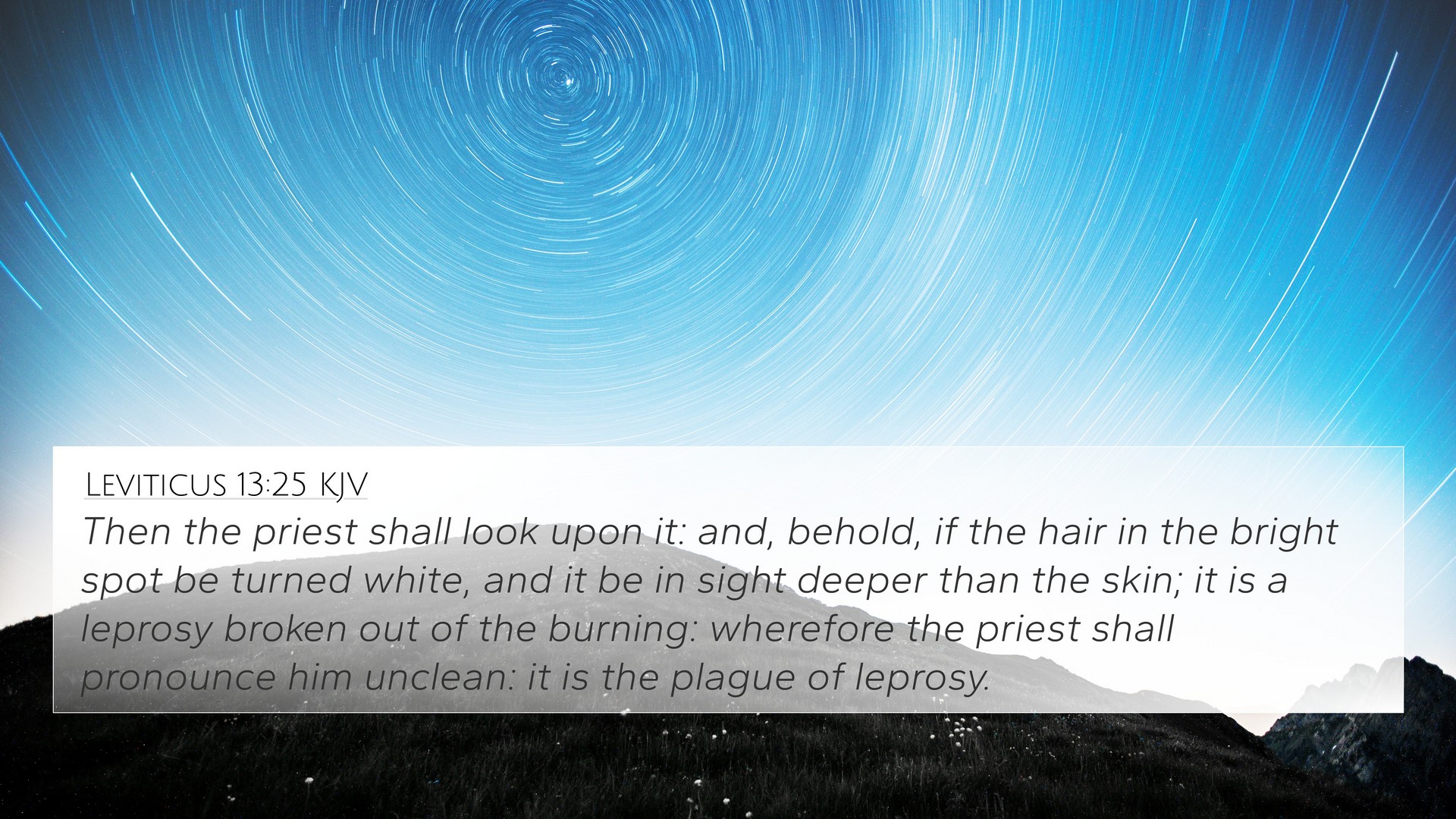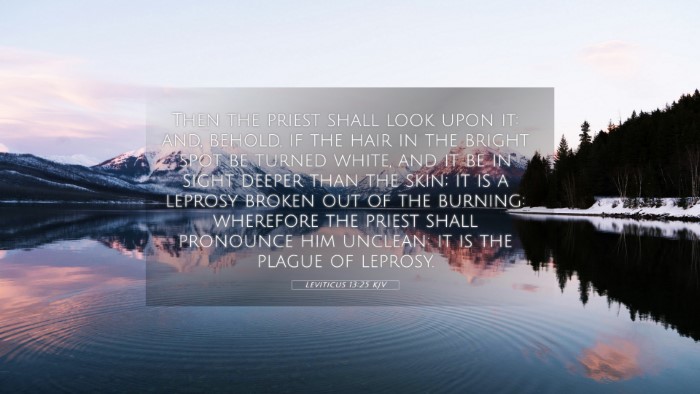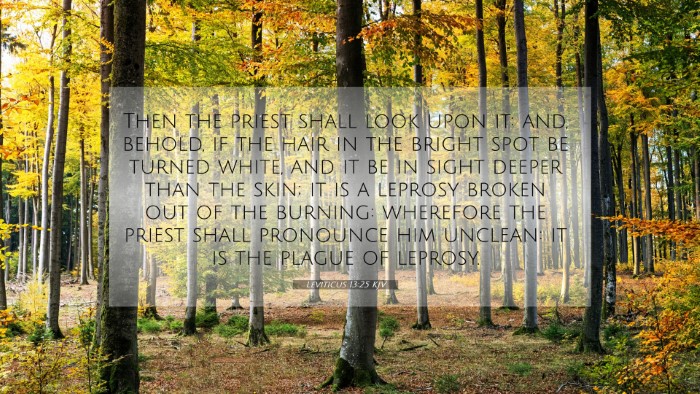Understanding Leviticus 13:25
Leviticus 13:25 states: "Then the priest shall examine the infection, and if the swelling of the infection is white and it appears to be deeper than the skin of his body, it is an infectious leprosy; the priest shall examine him and pronounce him unclean."
This verse is part of the Mosaic Law concerning ceremonial cleanliness and the evaluation of skin diseases, widely recognized in the Old Testament.
The text requires the priest to conduct an assessment, reflecting both a physical and spiritual evaluation of the individual.
Key Insights from Public Domain Commentaries
-
Matthew Henry's Commentary:
Matthew Henry highlights the importance of the priest's role in declaring illness and purity.
He notes that the emphasis on the priest's examination reflects God's concern for the community's holiness.
This purification process underscores the need for adherence to divine regulations, revealing how sin can manifest in physical conditions.
-
Albert Barnes' Notes:
Barnes elucidates that the criteria for leprosy provided in Leviticus 13:25 are meticulous, serving both an immediate health purpose and broader theological implications.
The severity of the disease symbolizes how sin can deeply injure and corrupt the spirit.
He posits that the deeper the infection, the more significant the physical and spiritual implications, representing the profound effects of sin in one's life.
-
Adam Clarke's Commentary:
Clarke expounds on the societal implications of the regulation in this verse. He argues that these laws served both to protect the Israelite community from contagious diseases and to symbolize the destructive nature of sin.
He stresses the necessity of spiritual vigilance, comparing physical leprosy to the unseen spiritual ailments that can infect the human heart.
Cross-References to Leviticus 13:25
- Leviticus 14:2-32 - Details the laws concerning cleansing from leprosy.
- Numbers 5:2-3 - Discusses the isolation of the unclean, relating to community health.
- 1 Peter 2:24 - Connects to healing and spiritual restoration through Christ.
- Matthew 8:2-3 - Jesus heals a leper, fulfilling the law's requirement for purity.
- Lamentations 3:39 - Reflects on the consequences of sin, akin to physical ailments.
- Mark 1:40-45 - Another instance of Jesus' healing of leprosy, highlighting His authority over sin and disease.
- John 9:2-3 - Discusses the connection between sin and physical anomalies.
- Romans 6:23 - Depicts the ultimate consequence of sin, paralleling the concept of uncleanness.
- Hebrews 12:1-2 - Encourages believers to rid themselves of sin, akin to purging uncleanness.
- Revelation 22:14 - Discusses purity and entry into eternal life, creating a thematic link to cleansing.
Thematic Connections and Interpretations
The verse in Leviticus illustrates deep connections within the Bible regarding sin, purity, and healing. The examination by the priest signifies an essential prelude to understanding one's spiritual state.
This process is akin to the self-examination encouraged in the New Testament, emphasizing accountability and holiness in the life of a believer.
Each cross-reference mentioned supports a broader understanding of the thematic links between Old Testament law and New Testament grace.
The correlation between various scriptures indicates that the call for ritual purity in Leviticus finds its ultimate fulfillment in Christ's redemptive work.
Conclusion
Leviticus 13:25 serves as a foundational verse for understanding the implications of sin and the divine provision for healing in both the Old and New Testaments.
The rigorous examination by the priest reveals not only the need for physical health but also the importance of spiritual health within the community.
In engaging with this verse through cross-referencing, readers can enrich their understanding of biblical themes and how they connect throughout scripture.
The tools for Bible cross-referencing, such as a Bible concordance and comparative Bible verse analysis, facilitate deeper study and appreciation of God's overarching narrative.




